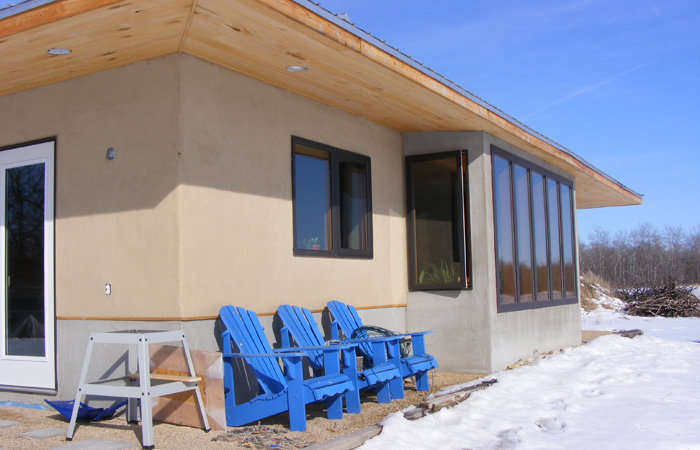We’d do it again…with some changes…
Ten years ago when our last child finally graduated high school, we decided it was now or never to follow through on our many years-long dream of building a house…an alternative house…in “the country”. We had investigated a number of construction methods…straw bale, stack wall, rammed earth, earth ship, log, etc. …and lent a hand as friends and others we got to know through the search followed their alternative house building dreams.
Choosing an approach was not quick and easy. With our years of research and hands on experience, we saw the advantages (and some of the downsides) to each. So, we had to write down our values and priorities, and finally decide about which method and materials fit best. We decided on clay-straw.
Some of our priorities:
- natural and sustainable building materials, as much as possible
- passive solar design
- healthy
- nurturing, aesthetically and otherwise
- built by us, friends and family, as much as possible
Clay-straw wasn’t the only method meeting our expectations, but it felt right, and our timber frame builder, Hans Friesen of Hans Timberworks, pointed us to Robert and Paula Laporte at EcoNest Homes. A visit to their home in New Mexico (they have since relocated to Oregon) and participating in an EcoNest workshop build in Ontario sealed our decision.
Clay-straw is an ancient technique, used by people the world over for millenia. Clay of course is an abundant building material, and straw, or other binders like wood chips, manure or cat tail fluff (all of which we used at some point in our build) are also ubiquitous. Mixing them with water creates a durable, user friendly medium that people of all ages can work with. Our exterior walls are 12 inches thick, enveloping a timber frame skeleton. We also used clay to make most of our floors, counter tops, and as the wall finish, inside and out. The clay was sourced from the overburden of a nearby gravel pit and shovelled through various size screens, depending on the application, to eliminate stones, etc. Again, lots of opportunities for participation from friends and family.
Our house sits on a minimum of concrete (footings beneath the timber frame). Cement production worldwide is a major emitter of CO2.
Passive solar means orienting a house with windows to the south to capture heat energy, and retain it with efficient insulation. Our house does the former well and the latter less so. We have plenty of south facing glazing, and of course, good thermal mass in the clay walls and floors. However, the building envelope is not tight like so much of contemporary construction. There is no vapour barrier in the walls. The south facing clay straw wall mix is heavier on clay relative to the more strawy north wall. Sometimes labelled chocolate and vanilla, they vary according to the need to absorb sun energy on the south side or insulate against winter winds on the north.
Our primary interior heat source is a masonry heater, centrally placed, custom built by Matthew Kroeker of Prairie Mountain Masonry. The slow release heat radiating from the heater’s huge mass is absorbed by the floors and walls. We do also have an in floor auxiliary heating system, powered by a small electric boiler.
A year ago, we took advantage of MB Hydro’s solar rebate program to install a grid tied, 40 panel, ground mount system, anticipating that Hydro’s inevitable coming rate increases would make this a good investment. After a year of operation, we are happy with the system’s performance. The financial details for return on investment were outlined by Gary Martens in a recent column. Our experience has been similar to his.
After 10 years in our home, we understand it well and have some ideas of what would change if we were starting again with current knowledge. We have come to the conclusion that when it comes to alternative buildings, you have to make some basic choices. For example, is your priority to reduce (or eliminate) energy consumption? Then build a well designed, super insulated structure with the best, most expensive available windows and synthetic materials.
If, alternatively, you are more concerned about the embodied energy of your house build, and the impact on the environment of your materials over their life cycle, then move toward a more natural method…and possibly adjust your lifestyle accordingly.
We were looking for a balance and felt we came close to having our home align with our values. The debate continues, both inwardly, and among people interested and concerned about being part of local solutions to global problems. Join it!




